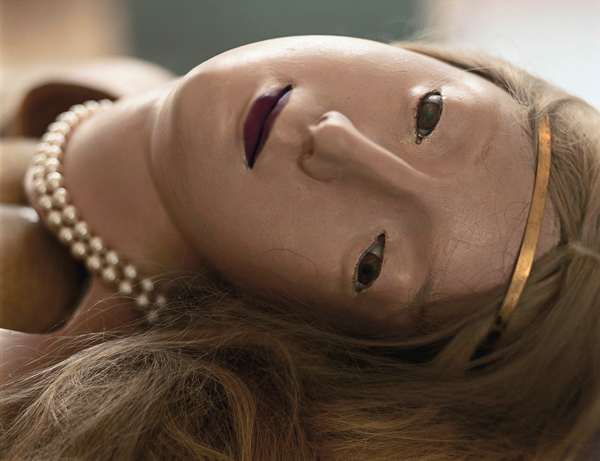
For photographers and artists alike, inspiration comes from all kinds of sources and can shape their body of work.
Renowned photographer and Bard College at Simon’s Rock professor Tanya Marcuse visited New Paltz to present her work and artistic process to photography students on Tuesday, April 7.
Marcuse is intrigued by the human body, and that interest drives her to create photos that express it in new ways.
From 2002-04, Marcuse created a series titled “Undergarments and Armor.” which depicts photos of both historic pieces of armor and old-fashioned undergarments.
Marcuse described the armor as a “sculpture” or “carapace” of the body, comparing it the shell on a turtle.
Marcuse went on to create “Wax Bodies” from 2006-08. Marcuse traveled to Italy and photographed the wax anatomical figures in La Specola, a small museum in Florence, and the Josephinum in Vienna. These models were created at the end of the Enlightenment in the late 18th century. The models portrayed dissected deceased people, with their organs, blood vessels and bone structure visible, and were created to help medical students understand what the human body truly looks like.
Marcuse described the lighting in the display areas as “terrible.” Fluorescent lights occupied the ceiling in rows and bounced off of the glass cases in which the wax bodies were kept. Marcuse still had to do what she could with the light. She wasn’t going to go all the way to Italy only to give up.
“I really tried to embrace the reflections, embrace the way the light would enter the subjects and become part of the photograph and stop fighting it,” Marcuse said.
She also explained that at a certain time of day, for only a minute or two, a tiny bit of sunlight would enter the room through a slip in the curtain. She would wait until that one moment to take the photo.
Marcuse was interested in wax models because they represented a preservation of things that cannot last. The only reason the wax anatomical models were made is because the human body will rot over time and therefore cannot be used.
This led to “Bountiful,” a series detailing a collection of 20th century wax agricultural models housed at the New York State Agricultural Experiment Station in Geneva, New York.
Marcuse enjoyed the labels given to various green bean wax models, such as “Refugee” and “100 Per Cent, Profit.”
Her newest series, “Fallen,” is inspired by Hieronymus Bosch’s “The Garden of Earthly Delights.” “Fallen” is a set of garden photographs meant to emulate the chaos depicted in Bosch’s famous triptych.
Marcuse makes arrangements of plants, fruits, insects, animals and whatever else she can find and lays it out to make it appear as a full garden.
Marcuse collected fruit that had fallen beneath trees and started to decay and froze them in order to sustain their look, continuing the theme of preservation. She also borrowed some animals such as snapping turtles to use from her friends.
Marcuse described this series as balancing two extremes. In “Fallen Nº 484,” the dead, rotten fruit contradicts the cicadas just starting to come out of their shells.
